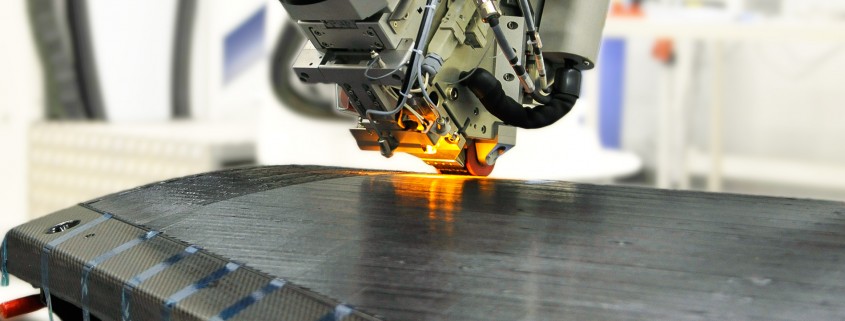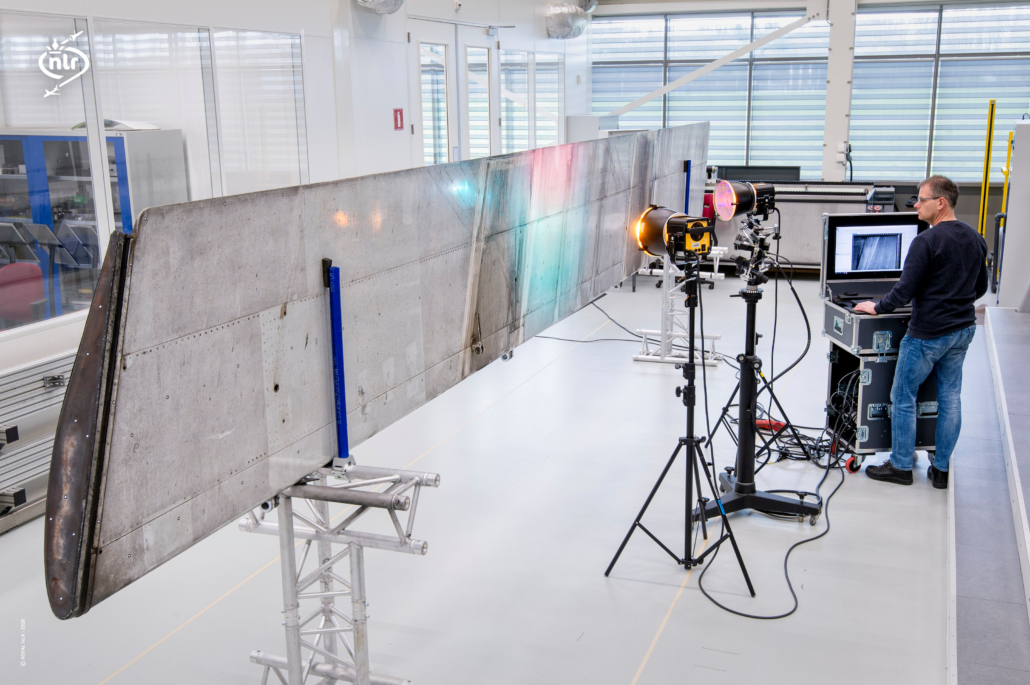The use of composite materials has become a new norm in the aerospace and mobility sectors. While the weight, strength and usability benefits are clear, there are still some big gaps to fill – namely a knowledge gap in knowing how to inspect, repair and extend the life cycle of such material. To fill this void, NLR is teaming up with material and technology experts to launch the DCMC, aimed at enhancing knowledge and technology to keep the composites world moving.
If you’ve driven a car over the last few decades, you’ve probably noticed a change in construction. While bodies remain largely steel, more and more of the structural parts come from composite materials like carbon fiber. Similarly, the aerospace sector has also adopted the use of composites, as it cuts down on weight and subsequently, fuel. And with all eyes on fighting climate change, wider use of these durable and lightweight composite materials is certain to be a big piece of the puzzle in lowering emissions.
However, according to composites expert Bert Thuis of the Royal NLR – Netherlands Aerospace Centre, at least one big challenge remains. “It’s clear that the use of composites is increasing, which is great. However, what we’ve encountered is that there exists a real gap in knowledge when it comes to inspecting and repairing composite structures,” describes Thuis.
That’s where NLR is looking to shake things up and is teaming up with aerospace specialists GKN Fokker, Specto Aerospace and the TU Delft to establish the Development Center for Maintenance of Composites (DCMC) – a new research centre completely devoted to the development of new technologies and enhancing knowledge to extend the life cycles of composite materials and parts.
monopoly
For nearly half of his 30+ years of working at NLR, Thuis, now serving as Technical Director of the DCMC, has been immersed in the structured technology department of NLR. In his roles, he’s been involved with a number of OEMs as they’ve set out to launch new development programs. Their goal, according to him, is simple. They want to sell airplanes, helicopters, or drones. Upon delivery, they also send a structural repair manual with repair instructions.
“What we see, however, is that these manuals are very thin and don’t offer much in the way of instructions,” Thuis describes. “In order to increase the operation level of an airplane or helicopter, new inspection and repair procedures have to be developed and made available – either to enable operator repairs in-house, or by setting up a dedicated channel of communication with proposed repair suggestions and instructions from OEMs.”
Adding another layer of complexity is the fact that, when dealing with composites, the damage can often times be easily overlooked, or invisible altogether. “If you take a hammer and bang your car, you’ll see a dent. It’s a visible damage, which is easy to both see and normally easily repaired. Composites, on the other hand, especially the high specification, high-tech materials like thermoplastics (materials which can be reheated, molded and cured multiple times) or carbon-fiber-reinforced thermosets (composites that cure only one time at elevated temperatures), which are used in the aerospace and automotive industries don’t have the same plasticity. That means there may be no visible damage, but it’s still there and has the potential to be serious.”
Kissing bond
The problem is current methods of inspection and repair are antiquated and labour intensive. The most commonly used technique to investigate for damage is known as the woodpecker, where someone goes across the entire surface of the aircraft with a pointed hammer, tapping on the composite to listen for hollow sounds. When a troubled spot is found, the solution is to cut the material around the damage, drill holes into the surface and then attach a patch with rivets.
“Inspection and repair technology has been stuck at the same level since the 90s, with very little improvement. Essentially, to repair damage, technicians have to create more damage to the structure by drilling holes. And at the moment, that’s the only acceptable solution,” illustrates Thuis. “Up to now, sort of the holy grail was to create a bonded patch to fill the problem areas. But the problem becomes, how do you know if the bond is strong enough, or if it’s what we call a kissing bond – where the bond seems to be strong and holding, but then with some sort of tap, it falls off. And if it is good, how long can it last? These points are crucial to know, but at this time, we just don’t.”
Opening such a centre offers the Netherlands the opportunity to be internationally recognized in the field of composites maintenance
This is where Thuis and NLR believe the DCMC can make a real and lasting difference. In its role as the technology institute, NLR is arming the DCMC with the knowledge and researchers to get the centre up and running. Additionally, NLR will supply the DCMC with experts to provide training and assessment of potential technologies in the field.
“Together with our partners, we’re definitely focused on modernizing and automating the approach to inspection and maintenance composite materials. We have established a pretty comprehensive technology roadmap, looking at different techniques and approaches ranging from ultrasonic solutions to thermal image scanning like shearography or thermography and more,” describes Thuis. “We also want to enable other experts and innovators to not only learn from our expertise, but also to share theirs. For that, the DCMC will be rolling out a development box, where members of the center can test and validate their technology on a number of different composite modules and models and perhaps get assistance from DCMC to help optimize their solutions.”
vision
According to Thuis, opening such a centre offers the Netherlands the opportunity to be internationally recognized in the field of composites maintenance, and is quick to point out, opening the DCMC is just the start. NLR’s bigger goal is to keep that leading edge and to stay at least one step ahead of the industry.
“Companies are often focusing on the problems they foresee over the next year. But we’re really thinking about this with a longer-term vision and want to really push technology developments in the domain. We’ve got a lot of ground to cover, especially since we anticipate a boom in the use of composites in the next 5-10 years,” express Thuis. “But we believe that the DCMC has the potential to be a real centre of excellence in advancing composite material technologies in aerospace and beyond – including automotive, maritime and even wind turbines in the energy sector.” Adding, “Basically, if it moves, we think we can help.”
Partners of DCMC are Fokker Services, Royal NLR, TU Delft, Specto Aerospace, Rewin, BOM, Dutch Terahertz, Damen, TiaT Europe, and supported by EFRO, the European Fund for Regional Development and the Province of Noord-Brabant.
For additional information see the website of DCMC: http://www.composite-maintenance.com/




 Ampyx Power
Ampyx Power